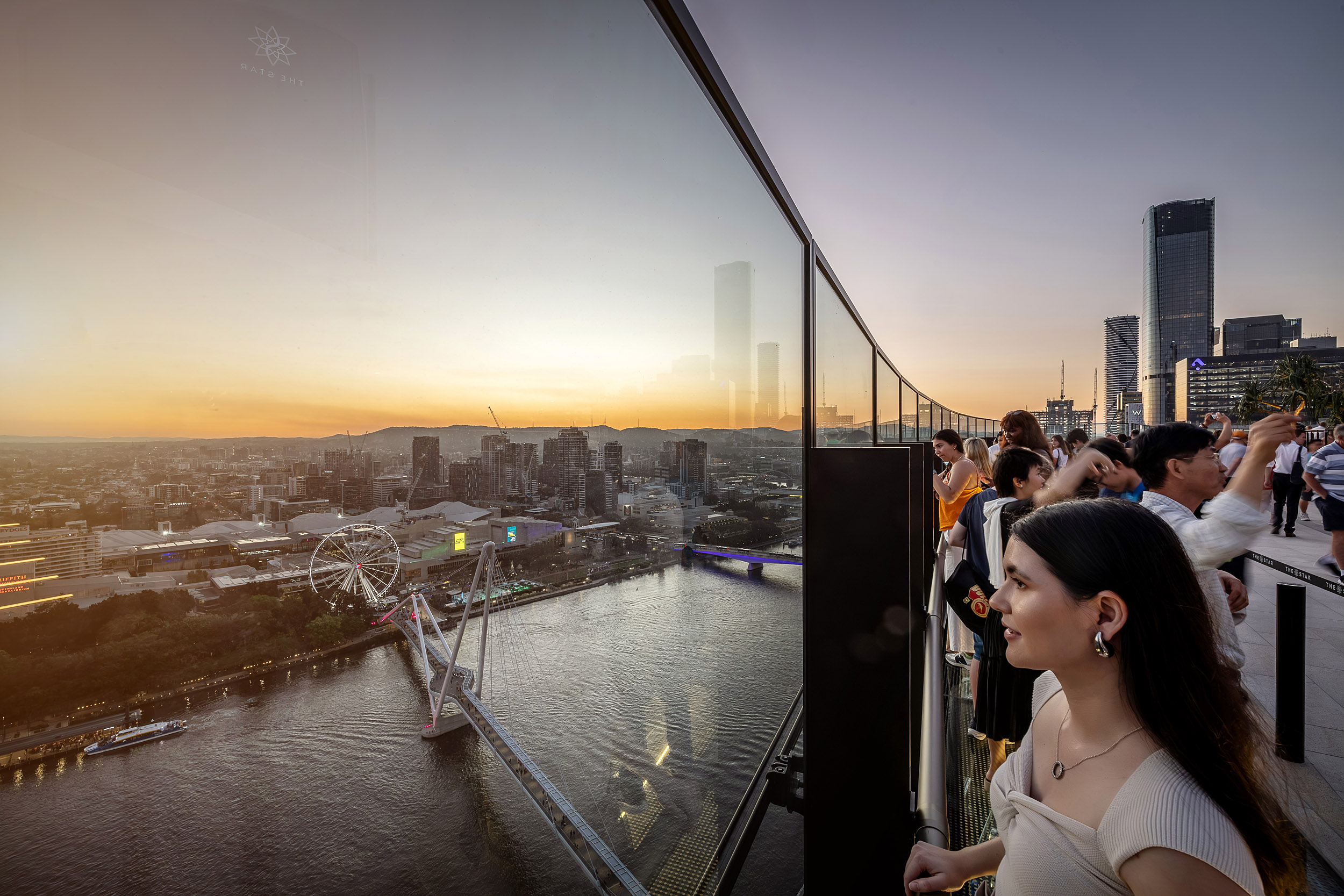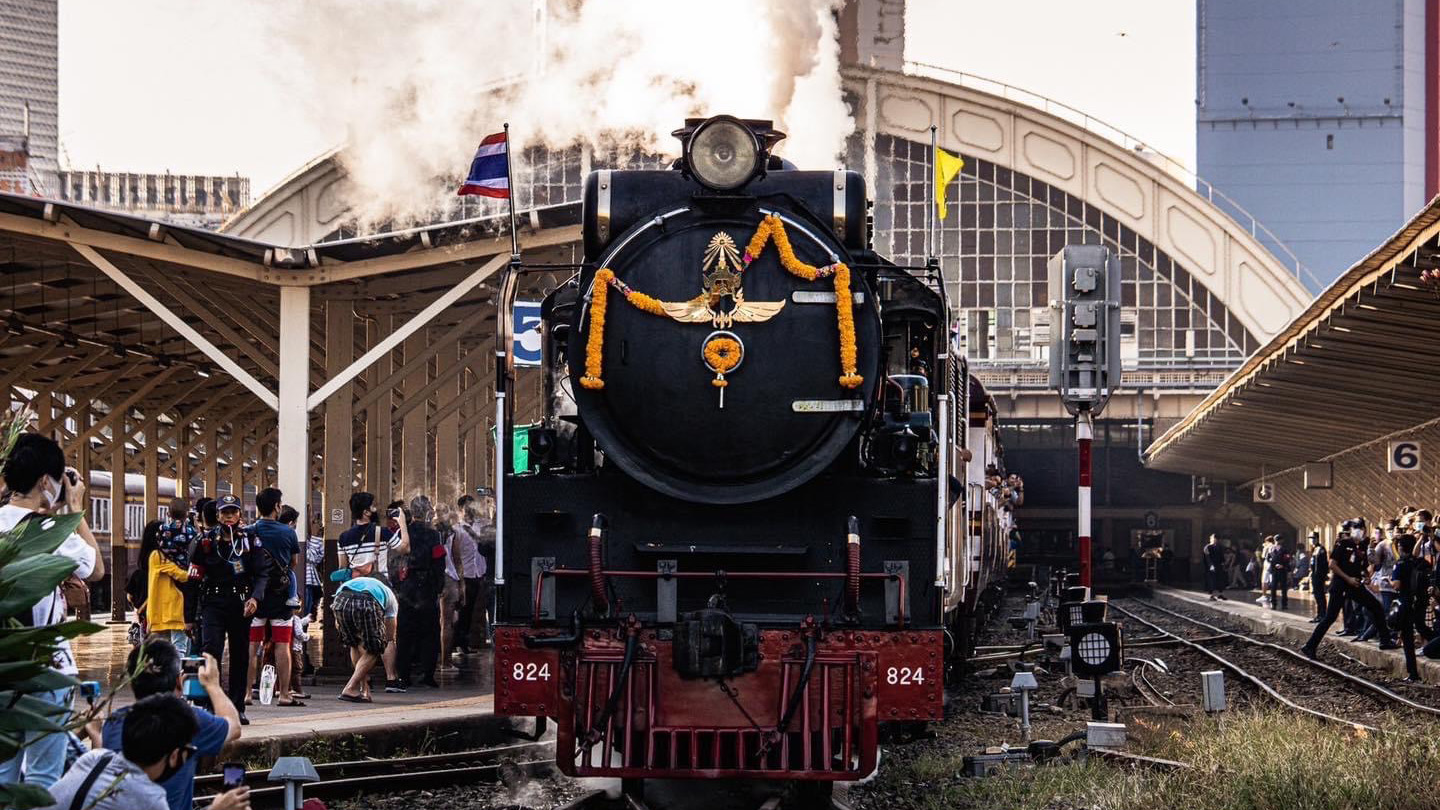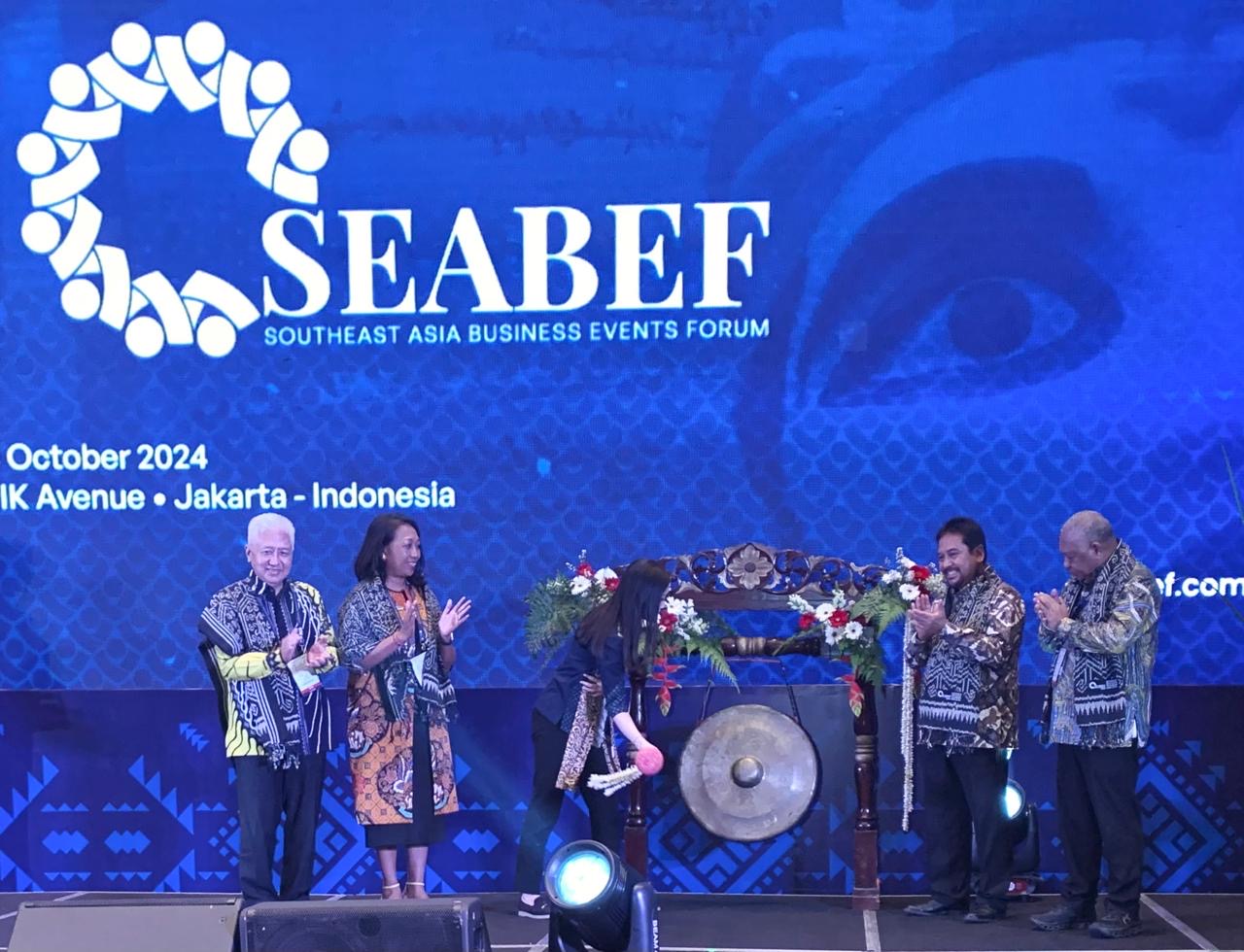Bali has a deadline later this year it can’t afford to miss. The expansion of the Ngurah Rai International Airport in Denpasar and construction of two major road projects – the underpass linking it to the Kuta entertainment precinct and an elevated toll expressway to make travel faster between ?the airport and Tanjung Benoa-Nusa Dua, where many luxury resorts are located – must all be completed before September in the run-up to the 2013 APEC Summit from October 5 to 7.
Once these are in place, Bali officials are confident they will have fresh and vitally needed armaments to promote their destination as a paradise for those with either work or play on their minds…or indeed both.
Bali has come a long way since those dark days in 2002 and 2005 when terrorist bomb attacks shattered a community associated with wonderful calm and tranquillity – for many of the incidents and ensuing carnage still seem to have been just a horribly bad dream. In the past decade, the Balinese, many resident foreigners and stakeholders in the island’s main revenue industry, tourism, have pulled together to heal and rebuild. Happily, it seems that their efforts are paying off.
Exceeding expectations
Ida Bagus Kade Subhiksu, head of the Bali Tourism Office, recently reported that overseas arrivals in the last five years have grown between 10 and 12 per cent. "A total of 2,888,864 tourists came to Bali in 2012, exceeding our target of 2.8 million. Our target for this year is 3.1 million," he says.
Australia leads the pack of top tourist generators, followed by China, Japan, Malaysia and South Korea. In the aftermath of the first terrorist assault in 2002, which claimed the lives of several Australians, it was understandable this market shied away for some time. The return of the Aussie traveller in significant numbers can only mean they sorely missed Bali’s renowned attractions of sun, sand and unique culture, and they’re making up for lost time.
Subhiksu hastens to add that the domestic base has also enhanced Bali’s renaissance story, given it contributed 5.6 million last year to visitor numbers.
While figures on those visitors landing in Bali with the express purpose of participating in a meeting or incentive remain elusive – Subhiksu admits they are still trying to refine their survey methods in conjunction with immigration officials and hotels – current intense activity in the hospitality scene surely indicates a response to peaking demand for stays and event venues.
A pantheon of new properties
Starwood is one hotel company that is staking out its territory in an unmistakably aggressive way. From the Laguna Resort and The Westin Nusa Dua Bali (which manages the Bali International Convention Centre) – long-time tenants of the Nusa Dua tourism complex – its portfolio has grown to include St Regis Bali Resort (launched in 2008), W Retreat & Spa Bali – Seminyak (launched in 2011) and Sheraton Bali Kuta Resort, which launched last December.
That’s not the end of Starwood’s march to prominence in Bali, according to Vivian Choa, cluster director of sales and marketing. Le Meridien Jimbaran is in the soft opening stage, and with the brand’s trademark emphasis on facets of local culture, it will be ideal for incentive groups wanting an authentic taste of the destination. The game changer though is expected to be The Westin Ubud, poised to open in 2014 in one of the island’s most bucolic and traditionally scenic regions. As well as meetings set in venues with gorgeous views of the surrounding valley, nature-oriented team-building activities will combine to create, hopefully, inspiring sessions. Finally, The Sarasvati, a Luxury Collection member, set to launch in January 2014, rounds off the chain’s Bali masterplan for the foreseeable future.
For many years, The Mulia Group counted only the highly visible Mulia Jakarta under its hospitality wing. But last December, the multi-product Mulia Bali introduced a grand, if not showy, dimension to the local events scene. Not one but two ballrooms grace its conference facilities, the Grand Ballroom holding up to 2,000 people, the junior ballroom up to 1,600 guests. These, plus three separate accommodation offerings – The Mulia (all suites), Mulia Resort (with a variety of room types) and Mulia Villas – help create an utterly self-contained complex catering to a variety of functions, including alfresco events.
Not to be outdone, other hotel chains are announcing their own debuts, with a Sofitel due in September this year, Jumeirah in 2015, The Fairmont in 2016 and a Shangri-La at a yet unspecified date. Undoubtedly, this won’t be the last we shall hear of hotel openings.

Le Meridien Jimbaran's Celebration Pavilion
Confidence renewed
Event and incentive travel experts who have been tracking Bali’s fortunes, and actively organising events there, declare confidence in its upward trajectory. Renato Domini, managing director of AsiaWorld Indonesia, says, "the Indonesian government has been doing a great job not only in Bali, but also throughout the archipelago, to instil confidence overseas. There is always a risk here, but there is always a risk anywhere. I think people are not put off by the security checks, and in fact appreciate them."
Vidya Hermanto, managing director, Corporate Incentive Management of Panorama Group, which handles both inbound and outbound meetings and incentive movement, adds: "Overall, I believe Europe and the US have more confidence in Indonesia and Indonesians these days. They have shown to be more welcoming when our outbound clients apply for Schengen or US visas.
"Security checks in Indonesia have become the standard, and as long as it’s done properly and politely, people won’t mind. Bali is fast building up the logistics to regain its place in the international meetings scene. I’m sure it will be ready for APEC in September."
Despite the havoc that the current public works – both at the airport and on the main roads – is creating, Bali’s determination to prove that it is back in business is palpable and undeniable. Only the very obtuse or totally unconcerned would not feel the buzz.
FAST FACTS
ACCESS: More than 40 airlines connect Bali directly or through Jakarta to the world. The most direct flights come from Australia, where every major city has frequent daily connections. Most Asian capitals have direct flights as well, including Singapore, Kuala Lumpur, Bangkok, Hong Kong, Guangzhou, Shanghai, Seoul, Tokyo, Nagoya, Osaka, Taipei and Kaohsiung.
CLIMATE: Bali has a year-round temperature averaging 30 degrees C. The wet season is between October and April (dry season is from May to September) and the high season for visitors is July and August as well as the Christmas period.
VISA: Citizens of 64 countries are eligible for visa on arrival, costing US$25 for stays up to 30 days (renewable for another 30 days). Non-extendable visa-free entry to Indonesia for 30 days is available to passport holders of Brunei, Chile, Hong Kong, Macau, Malaysia, Morocco, Peru, the Philippines, Singapore, Thailand and Vietnam. A travel document valid for at least six months is required.
LANGUAGE: Balinese have their own language, but they also speak Bahasa Indonesia – the state language. English is widely spoken to a good level within the tourist and business sectors.
CONTACT: Bali Tourism Board
tel +62 361 235 600
www.balitourismboard.org
Bali Tourism Office
tel +62 361 222 387
www.disparda.baliprov.go.id
LOMBOK'S CHARMS AND CHALLENGES
As Bali’s nearest island neighbour, Lombok has had to live under a mighty big shadow, something it’s never quite overcome despite boasting stunning landscapes and an unspoiled aura. In truth, it resembles Bali before it got serious about playing the tourism game.
Two of Lombok’s most renowned attractions are Mount Rinjani, Indonesia’s second highest volcano, which attracts numerous trekkers keen to ascend to the crater rim, and the perfect coral island trio of Gili Air, Gili Meno and Gili Trawangan in northern Lombok.
A dearth of overseas flights, hotel rooms and leisure options, however, continue to stymie demand from destination management companies, which recognise Lombok’s natural assets, but need more to go on to be confident their clients will be assured of a well-rounded experience. "It can only really take groups of up to 200 people," comments Vidya Hermanto, managing director, Corporate Incentive Management of Panorama Group.
She adds that the same three international hotel companies – Sheraton, Novotel and The Oberoi – have dominated the market for over a decade with no new competition, except from local contenders. ìThere are lots of good three-stars,î Hermanto stresses, but these are not the type global corporations want to treat their high achievers to.
Renato Domini, managing director of AsiaWorld Indonesia, who visited Lombok a few months ago, observes that meeting facilities remain limited, resulting in a stagnation in corporate enquiries.
If there is a bright spot that Hermanto and Domini agree on, it is the new Lombok International Airport (Bandara Internasional Lombok or BIL), which launched operations in October 2011 in Lombok’s second city of Praya. With the old Selaparang Airport in Mataram – capital of West Nusa Tenggara province – already exceeding capacity, BIL was a necessary investment.

Lombok's new air hub in Praya
Its 2,750-metre runway can accommodate Airbus 330s, Boeing 737s and 747s, while the commercial terminal has been designed to process three million passengers per year. Garuda Indonesia, SilkAir and AirAsia connect BIL to Jakarta, Singapore and Kuala Lumpur, while Lion Air, Batavia Air, Wings Air and Trigana Air fly to various points in the vast archipelago.
"It’s really big," says Hermanto, although she admits that the airport is not as easily accessible as the previous facility in Mataram. The distance between the two areas is a 45-minute journey by car on a generally smooth highway. ìIf tourism in Lombok is to develop, much more has to be done infrastructure wise,î she concludes.
Practical advice from an events expert, and words the authorities should heed if, eventually, they want to stand shoulder-to-shoulder with the enduring charms of Bali.
For more about Lombok, visit www.lombok-tourism.com
THE PROFESSSIONALS
AsiaWorld Indonesia
tel +62 812 3850439
email: md@asiaworldindonesia.com
www.asiaworldindonesia.com
Panorama Group
tel: +62 21 2556 5000
email: vidya_hermanto@panorama-group.com
www.panorama-group.com
INCCA (Indonesia Congress and Convention Association) – Bali Chapter
email: ketut.jaman@melali-mice.com
SIPCO (Society of Indonesia Professional Convention Organizers) – Bali Chapter
email: sipcobali@gmail.com
HOTEL HIGHLIGHTS
International chains that have opened in the past five years:
HOLIDAY INN BARUNA BALI
All meeting venues are named after familiar spices, with Cinnamon identifying the ballroom that enjoys natural light and takes up to 264 people for cocktails. Peppercorn and Clove measure 104 sqm and 50 sqm respectively, while Vanilla and Nutmeg at 31 sqm and 30 sqm are ideal for groups of 30. A specially provided Departure Lounge features shower facilities and changing rooms, sofas, wifi and use of the hotel facilities, such as the pool, for guests waiting for late flights. It is open from 11am to 1am.
www.bali.holidayinn.com
LE MERIDIEN BALI JIMBARAN
Close to some of Bali’s most majestic and revered attractions such as Mengwi Temple, Tanah Lot and Pura Besakih, this 118-room property is the perfect base to explore its extraordinary traditions. Its event centrepiece, the Celebration Pavilion, is a versatile rooftop space that can host meetings, receptions and weddings with uninterrupted views of Jimbaran Bay. The Bale Banjar Ballroom is also on the same level, as are two divisible function venues.
www.lemeridien.com/balijimbaran
SHERATON BALI KUTA RESORT
Find this 203-room, balcony-laced property along Bali’s liveliest seafront strip. Adjacent to the Beachwalk complex, it places a wide range of leisure activities on one’s doorstep. The Sahid Ballroom, divisible into three, is the largest events space and can take up to 700 guests for cocktails. The nearby beach is a ready venue for team-building games.
www.sheraton.com/balikuta
THE ST REGIS BALI RESORT
The Astor Ballroom can comfortably host over 200 guests for both corporate and social events, while John Jacob IV and Newport in the business centre cater to smaller meetings of 12 and six participants respectively. A number of gardens and alfresco spots lend themselves to elegant tropical receptions or intimate cocktails.
www.stregis.com/bali
THE STONES HOTEL
The first Asian member of Marriott’s Autograph collection opened last October, targeted at those who gravitate toward independently run hotels. (New York’s renowned Algonquin Hotel is a member.) For a newcomer, it has some formidable events hardware: a grand ballroom for up to 2,200 guests for receptions, pre-function area, pool area for more networking and a Presidential suite with rooftop that can host up to 50 guests.
www.autograph-hotels.marriott.com
W RETREAT & SPA BALI-SEMINYAK
Starwood’s most insouciant brand arrived in Seminyak in March 2011, and the neighbourhood has never been the same since, with its culture of uber-cool service. Minds meet in the Great Room, 350 sqm of space divisible into two rooms, enjoying a garden terrace that invites a much-needed breather. Drinks at the Woo Deck and Sky Bar are an excellent way to kick off or wrap up a week’s workshop or bonding exercise.
www.whotels.com/baliseminyak
FUTURE OPENINGS
• Samabe Bali Resort & Villas (May 2013)
• Sea Sentosa residences (July 2013)
• Sofitel Bali Nusa Dua Beach Resort (September 2013)
• The Saravasti, a Luxury Collection hotel (January 2014)
• The Westin Ubud (2014)
• Jumeirah Bali (2015)
• The Fairmont (2016)
• The Ritz-Carlton (2014)
• Shangri-La (to be confirmed)
Margie T Logarta


